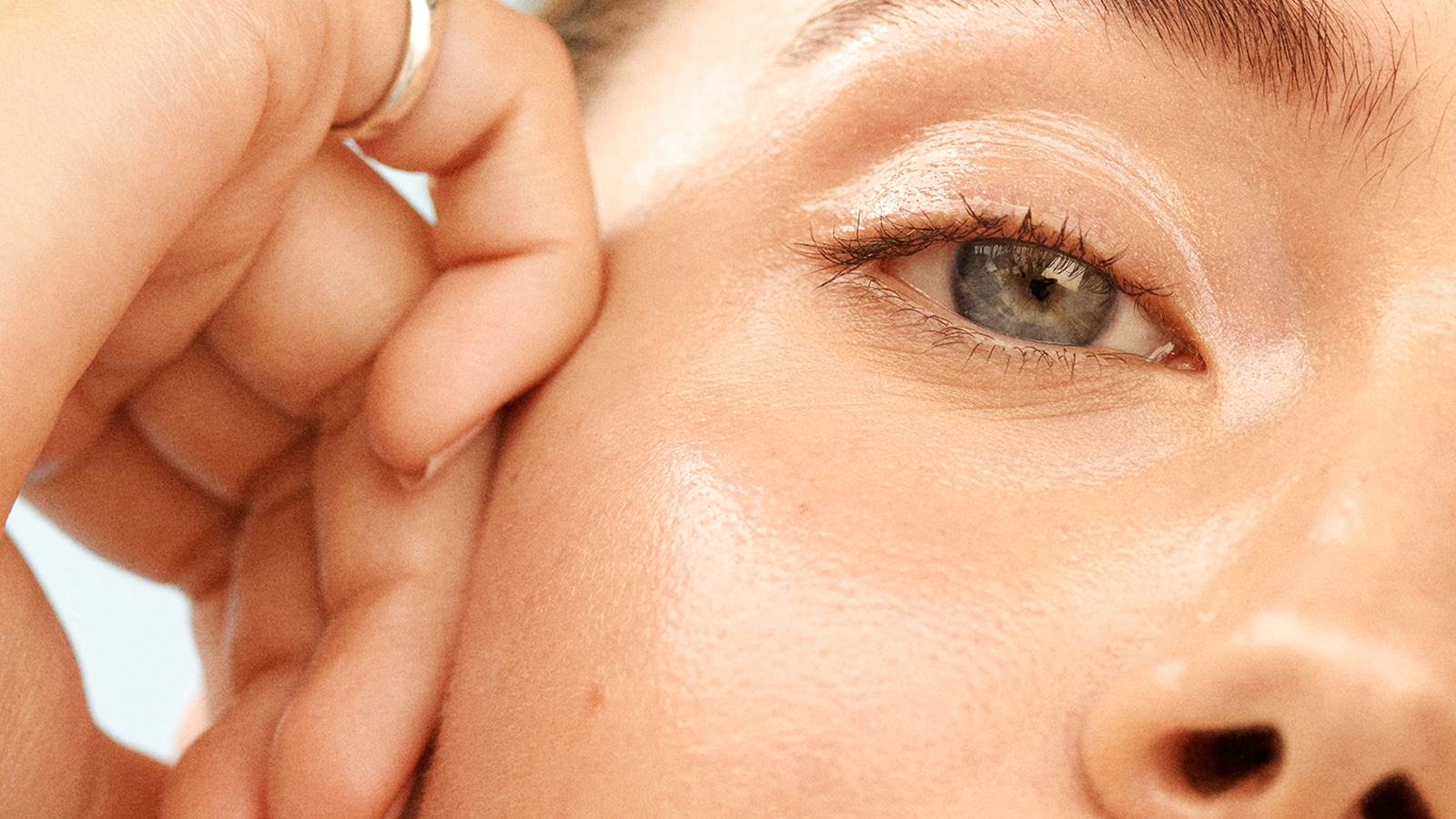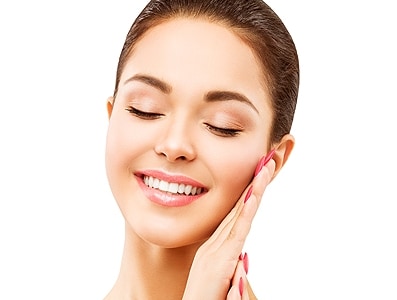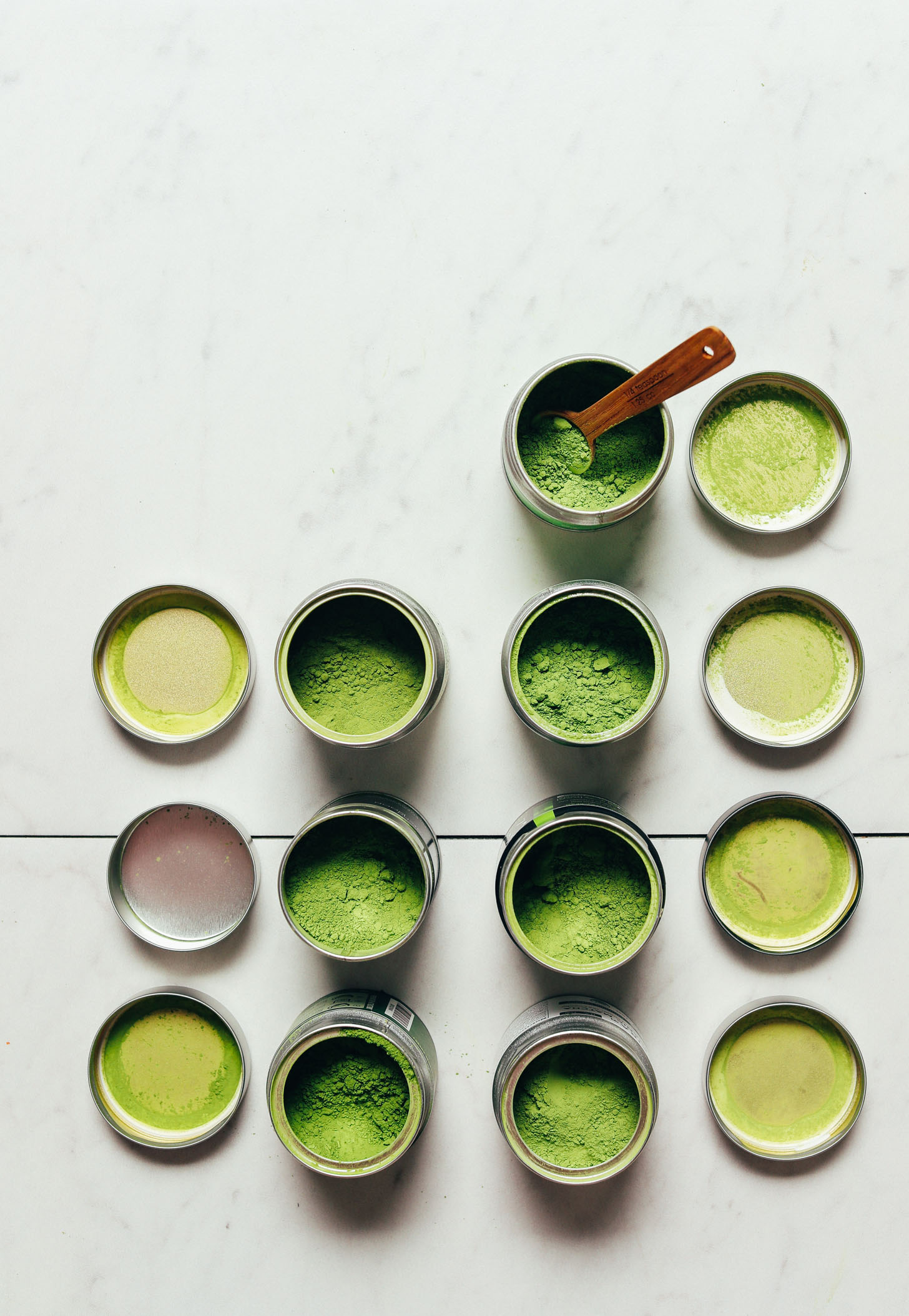[ad_1]
In case you’re liable to breakouts, you then absolutely take note of ingredient labels when shopping for new skincare or make-up merchandise. These with blemish-prone pores and skin are sometimes very targeted on avoiding pore-clogging substances (rightfully so). One group of substances that has gotten fairly a nasty status for clogging pores is silicones. However do silicones actually trigger blemishes, and may they be prevented by these with acne-prone pores and skin?
The easy reply is, no. Most silicones are very agreeable with pores and skin sorts which might be liable to clogged pores and blemishes. All of it comes all the way down to which sort you utilize, in addition to what different substances are within the components, as I’ll clarify.
What’s the Deal With “Comedogenicity?”
Comedogenicity is a time period that will get thrown round quite a bit in skincare, so first, let me outline what it truly means.
“Comedogenic” is a technical time period for “pore-clogging.” Since lots of my merchandise are designed to handle acne-prone pores and skin, I’ve studied comedogenicity extensively in my beauty chemistry programs in addition to within the lab when formulating merchandise. Primarily, comedogenicity refers to how probably sure topical brokers (primarily emollients) are to trigger the event of comedones. A product or ingredient that causes comedones to develop is taken into account comedogenic.
In oily pores and skin sorts which might be liable to clogged pores and zits, cell buildup (additionally known as retention hyperkeratosis) happens on the follicle partitions. Useless cells construct up and are coated by oil, which is being over-produced on this pores and skin kind. Zits micro organism feed off fatty acids, which they break down out of your pores and skin’s pure oils. It’s true that when utilized to the pores and skin’s floor, SOME oils and emollients additional coat these follicle partitions. This could probably exacerbate breakout situations. For individuals who don’t expertise points with blemishes (akin to dry pores and skin sorts), using these heavier substances shouldn’t be an issue in any respect—and actually, can truly assist to restore dryness.
Info About Silicones
There’s quite a bit that individuals don’t find out about this ubiquitous group of substances, so right here’s a short introduction to silicones and what they do:
- They’re utilized in skincare and make-up merchandise to ship a clean, tender, velvety texture to the pores and skin
- They assist deposit energetic efficiency substances, coloration, and fragrances evenly over the pores and skin
- They optically diffuse mild to melt the look of wrinkles and pores
- They’re a category of substances, so that you’ll by no means see simply the phrase “silicone” listed
- Not all silicones stay on the pores and skin after you apply them because of the completely different charges of volatility*
- They’ve way more advantages than dangers
- The most typical sorts utilized in make-up and skincare are cyclopentasiloxane, dimethicone, dimethiconol, Cyclomethicone, cyclohexasiloxane, and cetearyl methicone.
*Volatility can greatest be described because the diploma to which a molecule desires to be airborne into the ambiance. It’s the pace of the ingredient evaporation. Often, smaller molecules need to be airborne (instance: isopropyl alcohol) and the heavier ones don’t (instance: Vaseline). You may correlate volatility with weight.
PROS of Silicones
- Hypoallergenic and received’t sensitize the pores and skin, making them ultimate for simply irritated complexions
- Silicones themselves won’t clog the pores
- Give an attractive silky really feel when unfold over the pores and skin
- Soften the look of advantageous strains and wrinkles
- Will offset dryness attributable to harsh zits merchandise akin to benzoyl peroxide and topical antibiotics
- May help handle flakiness and cracking of the pores and skin in these with eczema and psoriasis situations
- Received’t depart a greasy really feel, making it ultimate for shiny pores and skin sorts the place a light-weight components is desired
- Protects pores and skin from environmental pollution by making a “breathable” barrier over the pores and skin whereas nonetheless permitting nitrogen, oxygen, and water vapors to move by means of
- They assist forestall transepidermal water loss (TEWL) to maintain pores and skin feeling moist even in dry climates like airplanes or the desert
- Can improve penetration of different substances utilized in a product (will also be a con, see under)
CONS of Silicones
- Can improve the penetration of another substances utilized in a product, which might result in clogged pores. If there are substances in a components that aren’t appropriate with oily, acne-prone pores and skin sorts (like some lipid-rich plant oils utilized in excessive concentrations), the silicone substances could facilitate a blockage within the pore lining. That is what can probably result in clogged pores and blemishes, not the silicone itself. Observe: Not all silicones have the power to do that, as I’ll describe under!
Silicones Helpful For Oily, Blemish-Inclined Pores and skin
These silicones are light-weight and have comparatively excessive volatility. This implies they generally tend to evaporate and don’t linger on the pores and skin or create an occlusive barrier.
Cyclopentasiloxane
Cyclopentasiloxane is light-weight and permits skincare merchandise to glide properly onto the pores and skin with out leaving a greasy feeling. After just a few moments, it evaporates from the pores and skin, leaving the opposite substances behind. Anybody involved about merchandise creating an occlusive barrier shouldn’t fear about cyclopentasiloxane of their formulation as a result of it basically simply acts as a service then goes away.
Cyclomethicone
This silicone is a mix of cyclotetrasiloxane and cyclopentasiloxane, which have excessive volatility making them evaporate after a while. This makes Cyclomethicone non-occlusive and completely secure for shiny, blemish-prone pores and skin sorts.
Cyclohexasiloxane
Cyclohexasiloxane is a mix of siloxanes with pretty excessive volatility, so it ought to evaporate off the pores and skin and be simply tolerated by oily, blemish-prone pores and skin sorts.
Silicones NOT Helpful For Oily, Blemish-prone Pores and skin (However Good For Different Pores and skin Sorts)
These silicones have low volatility, that means they don’t actually evaporate off the pores and skin and might create an occlusive barrier that might not be ultimate for these liable to clogged pores. Keep in mind that this doesn’t make them “unhealthy” substances—these silicones are nonetheless glorious selections for these with dry pores and skin sorts.
Dimethiconol
Dimethiconol has low volatility and doesn’t actually evaporate. That is helpful if you’d like it to remain on the pores and skin to assist appropriate dryness and forestall moisture evaporation from occurring.
Cetearyl Methicone
This can be a tender silicone wax that coats the pores and skin. It gives loads of slip to a formulation nevertheless it’s not unstable, so it might be thought-about a superb occlusive for dry pores and skin sorts in want of moisture restore. This implies, nevertheless, that it’s not ultimate for these liable to breakouts.
NOTE: To reiterate, it’s NOT the silicone that’s the situation. It’s provided that the components consists of different heavy, wealthy substances that the silicone permits to be pushed deeper into the pore. So if there usually are not different heavier substances utilized in a components, then these silicones technically shouldn’t trigger issues in blemish-prone pores and skin.
Silicones That May Be Good OR Dangerous for Oily, Blemish-Inclined Pores and skin
Generally, you simply can’t inform from an ingredient label how probably a silicone is to result in clogged pores. It might rely solely on how the silicone is formulated, as is the case with dimethicone.
Dimethicone
This one is sort of difficult as a result of it may well have many completely different weights. A formulator can use dimethicone that’s extraordinarily unstable, the place it evaporates off the pores and skin inside seconds making it secure for shiny pores and skin sorts. Or, a formulator could use dimethicone that’s extraordinarily heavy with no volatility, inflicting it to remain on the pores and skin and carry different probably pore-clogging substances into the pores. It’s virtually not possible for me as a formulator, not to mention you as a client, to take a look at an ingredient label and know which weight of dimethicone was used. The underside line? You may’t kind assumptions when seeing dimethicone on an ingredient record.
The Silicone Check
Final 12 months after I did a weblog put up about liquid foundations, I did an oil migration take a look at to assist me draw some semi science-based conclusions as to which of them have been one of the best for shiny, acne-prone pores and skin.
I wished to do an analogous demonstration with silicones. My purpose was to offer you a visible illustration of how in a different way numerous silicones can act in your pores and skin based mostly on their composition. I made a decision to get science-y once more to indicate you some visuals:
To start, I acquired samples of three completely different silicones from the lab and put just a few drops of every on paper. As you possibly can see, I examined cyclopentasiloxane in addition to two completely different dimethicone samples—one with a low molecular weight and one with a excessive molecular weight.
After 45 Minutes
![]()
After 45 minutes, you can begin to see how lengthy every silicone stays in its kind. That is an indicator of volatility (the speed at which one thing evaporates). It’s also possible to see that the extra unstable formulation unfold out extra earlier than evaporating, which could affect how and when a beauty formulator decides to make use of them.
One factor you possibly can’t inform from the picture is the consistency of every silicone. Each the cyclopentasiloxane (on the left) and the extremely unstable dimethicone (within the center) are the consistency of water however with a slippery, silky really feel. The non-volatile dimethicone (on the precise) is a thicker consistency like that of syrup, but in addition with a silky really feel.
After Two Hours
![]()
After two hours, each the cyclopentasiloxane and the extra unstable dimethicone had evaporated solely. This means that they’d not coat the pores and skin as a lot as the upper molecular weight dimethicone on the precise. The dimethicone on the precise could be higher for staying in place and creating an occlusive layer over the pores and skin.
The Conclusion
The primary two silicones are fast-drying and wouldn’t present a long-lasting occlusive impact, so neither needs to be problematic for clogged pore-prone pores and skin. Each would give merchandise a pleasant, clean texture and good spreadability.
The dimethicone on the precise has the next molecular weight than the primary two silicones, so it might coat the pores and skin as a substitute of evaporating. It’s an occlusive and would create a barrier, making it ultimate for dry pores and skin however not for shiny pores and skin—particularly if there are different pore-clogging substances used inside the similar components.
For sure, not all silicones are created equal. I hope this demonstration offers you a glimpse into simply how in a different way numerous silicones can act on the pores and skin. There’s a lot variation among the many substances that fall underneath the umbrella of ‘silicones’ and there’s no purpose to swear all of them off. It’s nearly selecting those which might be appropriate with your pores and skin kind.
Are Silicones Biodegradable?
It relies on which kind of silicone and what it’s functionalized with. Some usually are not readily biodegradable, which implies they’ll finally biodegrade nevertheless it takes time relying on just a few components. Different research present that silicones can accumulate within the setting (water) and that they’re not readily biodegradable. It’s a giant debate in our trade as a result of there are numerous conflicting research.
So Ought to I Use Silicones On My Pores and skin?
In case you like the feel and appear of your pores and skin whenever you use silicone-based merchandise then preserve utilizing them. Nevertheless, if you happen to suppose a silicone-based product is perhaps inflicting breakouts, it might very nicely be from one other ingredient within the components. I like to recommend that you simply attempt a special components however not rule out silicone solely.
Crucial level I’d wish to make about skincare formulation is that you may’t choose a product by an ingredient label. The outcomes a product delivers (constructive or unfavorable) are based mostly in your distinctive pores and skin, in addition to the odds of the substances utilized in a product—and also you’ll by no means know these percentages from trying on the record on the again of a bottle or jar. Merely put, you possibly can’t inform the true outcomes of a product till you truly attempt it. That is why I all the time counsel solely introducing one new product at a time, in addition to doing a patch take a look at earlier than you utilize it over your whole face. This manner, in case your pores and skin responds negatively, no less than you possibly can pinpoint which product it is perhaps.
Learn learn how to hydrate oily, acne-prone pores and skin with out inflicting breakouts. Obtained zits? There’s an upside.
A giant thanks to Valerie George, beauty chemist, and co-host of The Magnificence Brains podcast for giving me further perception for this put up!
Celeb Esthetician & Skincare Skilled
As an esthetician educated in beauty chemistry, Renée Rouleau has spent 30 years researching pores and skin, educating her viewers, and constructing an award-winning line of merchandise. Trusted by celebrities, editors, bloggers, and skincare obsessives across the globe, her huge real-world data and fixed analysis are why Marie Claire calls her “probably the most passionate pores and skin practitioner we all know.”
[ad_2]
Source link












